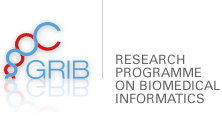
1/9/2016
Researchers of GRIB take part in the first major open source drug discovery trial
IMIM Press release 29/7/2016
The prestigious journal PLoS Pathogens has just published an article on the results of the Malaria Box project, an initiative of the Medicines for Malaria Venture that has given free, open access to new families of antimalarial molecules to 200 laboratories from 30 countries. The purpose of the project is to encourage new pharmacological discoveries that make it possible to fight neglected diseases and other illnesses and, for the moment, it has already initiated more than a dozen projects aimed at developing new drugs for various diseases.
The Systems Pharmacology group of GRIB (IMIM-UPF) led by Jordi Mestres, has participated in this extensive study that also involved three other Spanish centres, in the Basque country (BIOBIDE), Galicia (University of Santiago de Compostela) and Madrid (GlaxoSmithKline R&D).
"The trial was a success not only in regard to identifying anti-malarial compounds, but also in the identification of compounds for treating other parasites and cancer", explains Wesley Van Voorhis, first author of the study. "The US National Cancer Institute is now working on a drug that emerged from the trial to fight colon cancer, several European labs are looking into anti-worm compounds, and numerous US laboratories are researching drugs that combat other parasites. In addition, the Medicine for Malaria Venture is working with the pharmaceutical companies GSK and Novartis to find new drugs to treat malaria", he adds.
One of the main reasons for the shortage of new starting points for drug discovery is the lack of interaction between universities, research centres and industry. Much of the world's biology resources are in the universities and research centres, while the medical chemistry focus is still mainly in industry. This open source drug discovery and information exchange is clearly a first step in overcoming this lack of synergy. But above all, it is necessary to increase the open exchange of physical compounds in order to achieve this, and this is what has happened with the Malaria Box project.
"The global effort has led, not only to charactersing the mechanism of action of one third of the Malaria Box compounds as well as determining their potential toxicity and human safety indicators, but it has also identified new opportunities for reusing some of the compounds to develop new drugs for combatting babesiosis, toxoplasmosis, trypanosomiasis, cryptosporidiosis, schistosomiasis, and filariasis pathogens, among others, many of which have been neglected by the industry until now", explains Jordi Mestres.
The Systems Pharmacology group of GRIB took part in this project to determine any safety issues with Malaria Box compounds deriving from their interaction with human proteins. To do this, they processed 400 compounds using the CT-link software developed by Chemotargets, a GRIB spin-off, and the predictions were then validated in vitro, providing information about which compounds had to be prioritised in order to optimise the balance between efficacy and safety.
"This work demonstrates the immense power of providing open access to detection data and emphasises how a small additional investment to help acquire and distribute compounds can catalyse the discovery of drugs for various symptoms" adds Jordi Mestres.
The project's success has prompted the Medicines for Malaria Venture to distribute another group of compounds with a potentially broader application, christened Pathogens Box, which is now is accessible to scientific laboratories across the globe.
For more information about the Malaria Box project:http://www.mmv.org/research-development/malaria-box-supporting-information
Reference article
Van Voorhis WC, Adams JH, Adelfio R, Ahyong V, Akabas MH, Alano P, Alday A, Alemán Resto Y, Alsibaee A, Alzualde A et al (including Mestres J). Open-source drug discovery with the Malaria Box compound collection for neglected diseases and beyond. PLoS Pathogens, 2016; 12(7): e1005763



